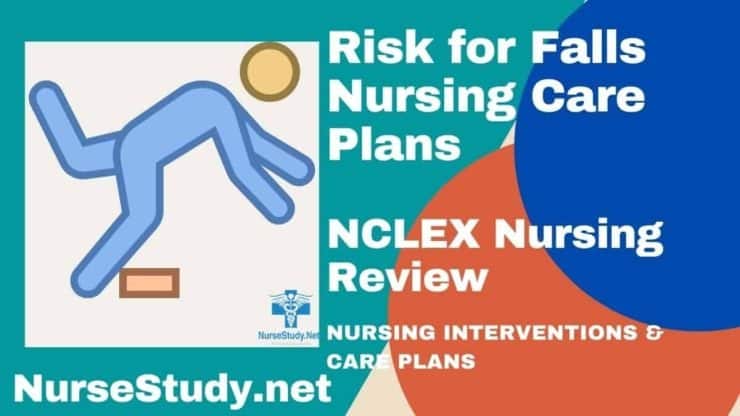Falls remain the leading cause of injury in healthcare settings, with research showing that 30-45% of hospital falls result in patient harm. Understanding and implementing proper fall prevention strategies can reduce fall incidents by up to 35%. This comprehensive guide provides evidence-based approaches for assessing, preventing, and managing fall risks in healthcare settings.
Understanding Falls Risk
A fall risk diagnosis identifies patients who may be prone to falls before an incident occurs. This proactive approach allows healthcare providers to implement preventive measures and maintain patient safety. According to recent studies, proper risk assessment and intervention can prevent up to one-third of falls in healthcare settings.
Risk Factors
Patient-Specific Factors
- Advanced age (65+)
- History of previous falls
- Muscle weakness or gait problems
- Visual or hearing impairments
- Cognitive impairment
- Chronic conditions
Environmental Factors
- Poor lighting
- Wet or slippery floors
- Cluttered spaces
- Inappropriate footwear
- Lack of assistive devices
Medication-Related Factors
- Sedatives and hypnotics
- Antihypertensive medications
- Diuretics
- Multiple medication use
- Psychotropic medications
Nursing Assessment
Primary Assessment Components
Complete fall risk screening using validated tools
Physical assessment including:
- Gait and balance evaluation
- Muscle strength assessment
- Visual acuity check
- Cognitive status evaluation
Medication review
Environmental safety check
Secondary Assessment Elements
- Review of medical history
- Evaluation of current mobility aids
- Assessment of daily living activities
- Review of recent fall incidents
Nursing Care Plans
Care Plan 1: Acute Fall Risk
Nursing Diagnosis Statement:
Risk for falls related to post-operative status and effects of anesthesia
Related Factors:
- Recent surgery
- Altered mobility
- Pain medication effects
- Unfamiliar environment
Nursing Interventions and Rationales:
Implement hourly rounding
- Ensures regular patient monitoring
- Addresses needs before unsafe movement attempts
Maintain bed in lowest position with brakes locked
- Reduces injury risk if patient attempts to exit bed
Ensure call light and personal items are within reach
- Prevents unnecessary movement attempts
Use bed/chair alarms as appropriate
- Provides early warning of unauthorized movement
Desired Outcomes:
- Patient will remain free from falls during hospital stay
- Patient will demonstrate an understanding of fall prevention measures
- Patient will use the call light appropriately for assistance
Care Plan 2: Chronic Fall Risk
Nursing Diagnosis Statement:
Risk for falls related to chronic conditions and polypharmacy
Related Factors:
- Multiple chronic conditions
- Use of multiple medications
- Decreased muscle strength
- Balance impairment
Nursing Interventions and Rationales:
Conduct medication review
- Identifies potentially harmful drug interactions
- Allows for medication adjustment if needed
Implement exercise program
- Improves strength and balance
- Enhances coordination
Provide assistive devices
- Supports safe mobility
- Reduces fall risk during activities
Desired Outcomes:
- Patient will demonstrate the safe use of assistive devices
- Patient will maintain balance during mobility activities
- Patient will verbalize understanding of medication effects
Care Plan 3: Environmental Fall Risk
Nursing Diagnosis Statement:
Risk for falls related to environmental hazards and poor lighting
Related Factors:
- Inadequate lighting
- Cluttered spaces
- Unsafe bathroom facilities
- Inappropriate footwear
Nursing Interventions and Rationales:
Conduct environmental assessment
- Identifies potential hazards
- Allows for proactive risk reduction
Install safety equipment
- Provides additional support
- Creates safer environment
Maintain clear pathways
- Reduces tripping hazards
- Ensures safe mobility
Desired Outcomes:
- Patient environment will remain free from hazards
- Patient will demonstrate safe navigation of environment
- Patient will maintain a clear pathway to bathroom
Care Plan 4: Cognitive Impairment Fall Risk
Nursing Diagnosis Statement:
Risk for falls related to altered mental status and confusion
Related Factors:
- Dementia
- Delirium
- Poor judgment
- Impaired memory
Nursing Interventions and Rationales:
Implement enhanced supervision
- Ensures patient safety
- Allows for quick intervention
Use visual cues and reminders
- Supports orientation
- Reinforces safety measures
Establish consistent routines
- Reduces confusion
- Promotes predictability
Desired Outcomes:
- Patient will remain in safe environment
- Patient will follow safety instructions with reminders
- Patient will maintain optimal level of orientation
Care Plan 5: Mobility-Related Fall Risk
Nursing Diagnosis Statement:
Risk for falls related to impaired physical mobility
Related Factors:
- Muscle weakness
- Joint problems
- Balance disorders
- Gait abnormalities
Nursing Interventions and Rationales:
Implement mobility assistance protocol
- Ensures safe transfers
- Prevents unauthorized movement
Provide physical therapy
- Improves strength and balance
- Enhances mobility skills
Train in proper use of mobility aids
- Promotes independence
- Ensures safe mobility
Desired Outcomes:
- Patient will demonstrate safe transfer techniques
- Patient will use mobility aids correctly
- Patient will maintain optimal level of independence
References
- Ackley, B. J., Ladwig, G. B., Makic, M. B., Martinez-Kratz, M. R., & Zanotti, M. (2023). Nursing diagnoses handbook: An evidence-based guide to planning care. St. Louis, MO: Elsevier.
- Bargmann AL, Brundrett SM. Implementation of a Multicomponent Fall Prevention Program: Contracting With Patients for Fall Safety. Mil Med. 2020 Jun 19;185(Suppl 2):28-34. doi: 10.1093/milmed/usz411. PMID: 32383457.
- Harding, M. M., Kwong, J., & Hagler, D. (2022). Lewis’s Medical-Surgical Nursing: Assessment and Management of Clinical Problems, Single Volume. Elsevier.
- Herdman, T. H., Kamitsuru, S., & Lopes, C. (2024). NANDA International Nursing Diagnoses – Definitions and Classification, 2024-2026.
- Ignatavicius, D. D., Rebar, C., & Heimgartner, N. M. (2023). Medical-Surgical Nursing: Concepts for Clinical Judgment and Collaborative Care. Elsevier.
- Silvestri, L. A. (2023). Saunders comprehensive review for the NCLEX-RN examination. St. Louis, MO: Elsevier.
- Spano-Szekely L, Winkler A, Waters C, Dealmeida S, Brandt K, Williamson M, Blum C, Gasper L, Wright F. Individualized Fall Prevention Program in an Acute Care Setting: An Evidence-Based Practice Improvement. J Nurs Care Qual. 2019 Apr/Jun;34(2):127-132. doi: 10.1097/NCQ.0000000000000344. PMID: 30198949.
- Turner K, Staggs VS, Potter C, Cramer E, Shorr RI, Mion LC. Fall Prevention Practices and Implementation Strategies: Examining Consistency Across Hospital Units. J Patient Saf. 2022 Jan 1;18(1):e236-e242. doi: 10.1097/PTS.0000000000000758. PMID: 32732628; PMCID: PMC7854936.
